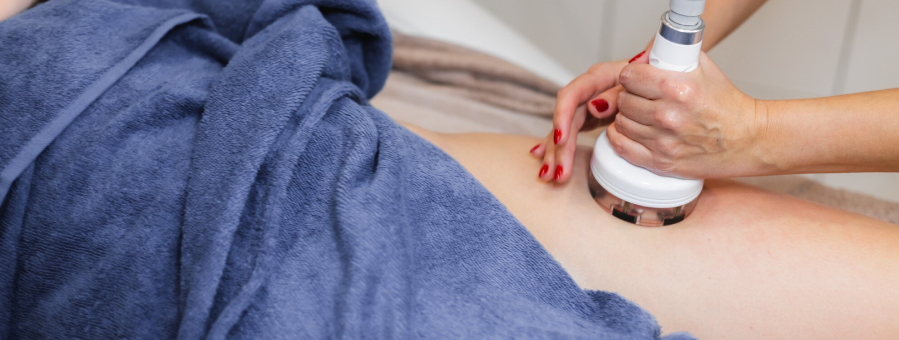Home / Face & Beauty / Cavitation

Cavitation
Cavitation is a non-invasive body contouring treatment that uses ultrasound waves to target and break down stubborn fat cells beneath the skin. This advanced procedure helps slim and shape areas like the abdomen, thighs, or arms without surgery or downtime. Experience gradual, natural-looking results with smoother skin and improved body confidence.
How Cavitation Works for Your Unique Needs
Ultrasound technology is tailored to your body and goals, targeting specific fat deposits and supporting better contour and smoother skin.


Ideal For:
- Stubborn fat
- Body sculpting
- Cellulite
Does Not Treat:
- Major obesity
- Loose skin
- Medical conditions
- Permanent results

Non-invasive fat reduction
Targets unwanted fat without surgery or anesthesia.

Body contouring
Shapes and sculpts problem areas for a more defined look.

Improves skin texture
Supports smoother, firmer skin over treated areas.

Boosts confidence
Helps you feel better in your clothes and body.

Comfortable sessions
Relaxing treatments with no pain or downtime.

Gradual, natural results
Fat cells are eliminated gently for a natural-looking transformation.

Hydration
Cavitation supports healthier skin hydration by boosting circulation or product absorption.

Dryness & Dullness
Many clients report brighter and more radiant skin after Cavitation.

Hyperpigmentation
Cavitation may help fade spots or discoloration over multiple sessions.

Acne & Blemishes
While not acne-specific, Cavitation may reduce inflammation and support skin clarity.

Sensitive Skin
Generally safe for most skin types. Our NYC providers offer patch testing when needed.

Tone & Texture
Cavitation enhances texture and smoothness, delivering a rejuvenated appearance.
The Cavitation in action.
Your provider glides an ultrasound device over the treatment area, delivering gentle waves that break down fat cells beneath the skin. The process is painless, and you can relax during your session and return to your daily routine right after.



"Cavitation helped me finally lose those stubborn inches around my waist! The sessions were comfortable and I started noticing changes after a few treatments. I feel so much more confident now."
Frequently Asked Questions
1. How many Cavitation sessions do I need?
Most clients see best results after 6–10 sessions, spaced about a week apart.
2. Is Cavitation safe?
Yes, it’s a non-invasive treatment with minimal risks and no downtime.
3. Does Cavitation hurt?
No, treatments are painless and often described as relaxing.
4. When will I see results?
Some clients notice changes after the first session, with continued improvement over several weeks.
5. Can Cavitation treat loose skin?
It primarily targets fat; for loose skin, other treatments may be recommended.
6. Who should avoid Cavitation?
Pregnant women, people with certain medical conditions, or metal implants in the area should not receive this treatment.
Need Help Choosing?
